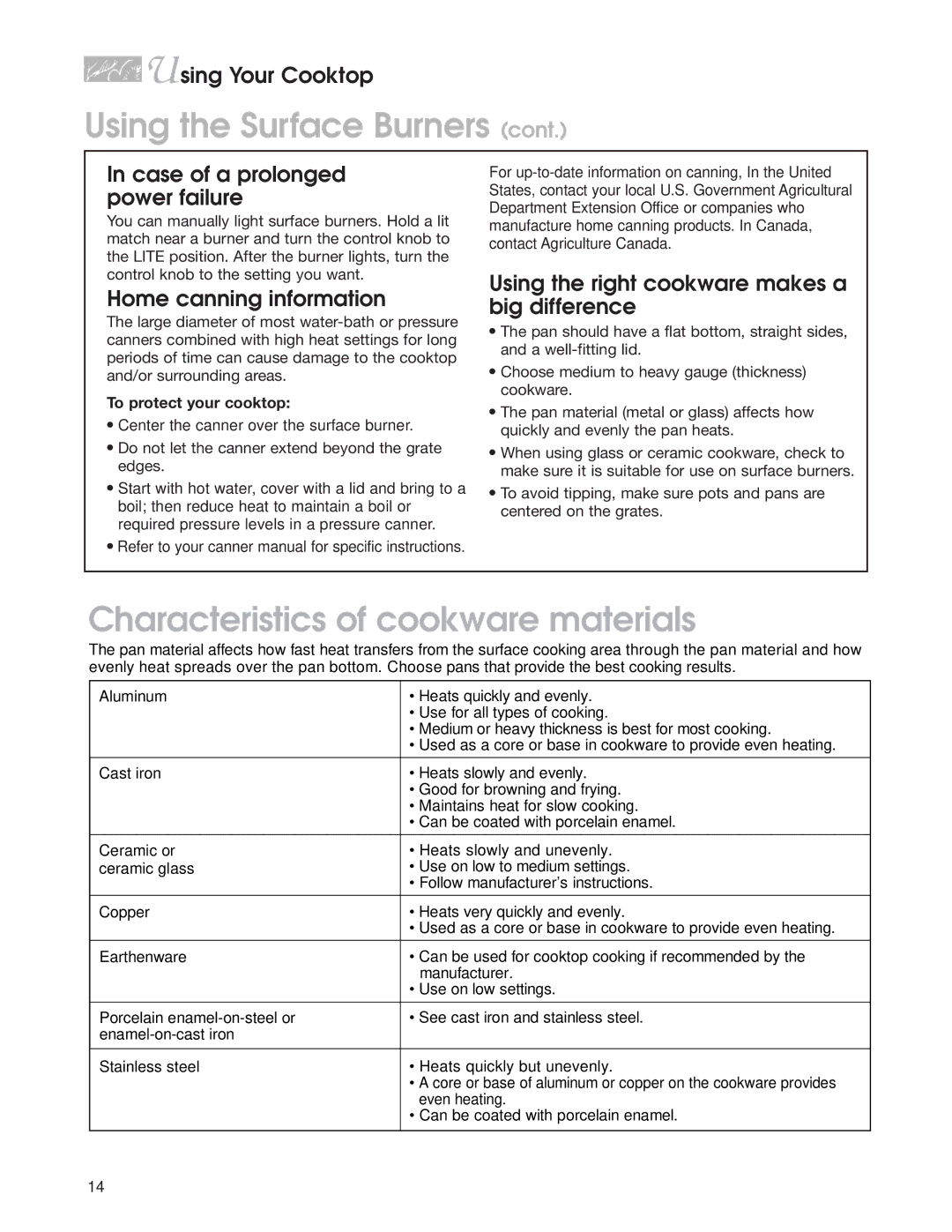KGCC566H, KGCC505H specifications
The KitchenAid KGCC505H, KGCT365G, KGCT055G, KGCSIGGG, and KGCC566H are standout options in the realm of kitchen appliances, each offering unique features that cater to diverse culinary needs.The KitchenAid KGCC505H is a powerful 30-inch five-burner gas cooktop that brings versatility to home cooking. Its high-output burners deliver intense heat, ideal for searing meats or boiling water quickly. With precise temperature control for simmering delicate sauces, this model embodies the kitchen essential for the amateur cook as well as the culinary enthusiast. The continuous cast iron grates allow pots and pans to glide smoothly between burners, making for a seamless cooking experience.
Next, the KGCT365G, a 36-inch gas cooktop, stands out for its professional-grade performance. Featuring Burner Technology that provides a range of cooking options, it includes a powerful dual-ring burner for high-heat cooking and a simmer burner for slow, controlled cooking. Its elegant stainless steel finish not only adds a modern touch to any kitchen but ensures durability and easy maintenance, making it a favorite among chefs.
The KGCT055G is a compact 30-inch model that emphasizes efficiency without sacrificing performance. This cooktop is designed with multiple burners featuring varying BTU outputs, allowing for a range of cooking techniques. It's particularly praised for its easy-to-clean design and consistent flame delivery, ensuring reliability in all culinary endeavors.
The KGCSIGGG brings innovation and style to the table with its unique layout and features. This cooktop is equipped with three powerful burners and a griddle, perfect for cooking breakfast favorites like pancakes and bacon simultaneously. The grill function provides an option for grilling indoors, expanding the cooking versatility beyond traditional stovetop methods.
Lastly, the KGCC566H highlights KitchenAid's commitment to functionality and user-friendly design. Featuring five burners with a central burner ideal for high-performance cooking, this model also includes a removable, dishwasher-safe griddle, making it easy to clean after that weekend brunch or family BBQ. With its sleek design and thoughtful features, it’s a favorite among modern culinary spaces.
Together, these KitchenAid cooktops epitomize quality, versatility, and design, making them ideal choices for any kitchen setup. Whether you're a casual home cook or a professional chef, these cooktops deliver exceptional performance tailored to meet your cooking style.
